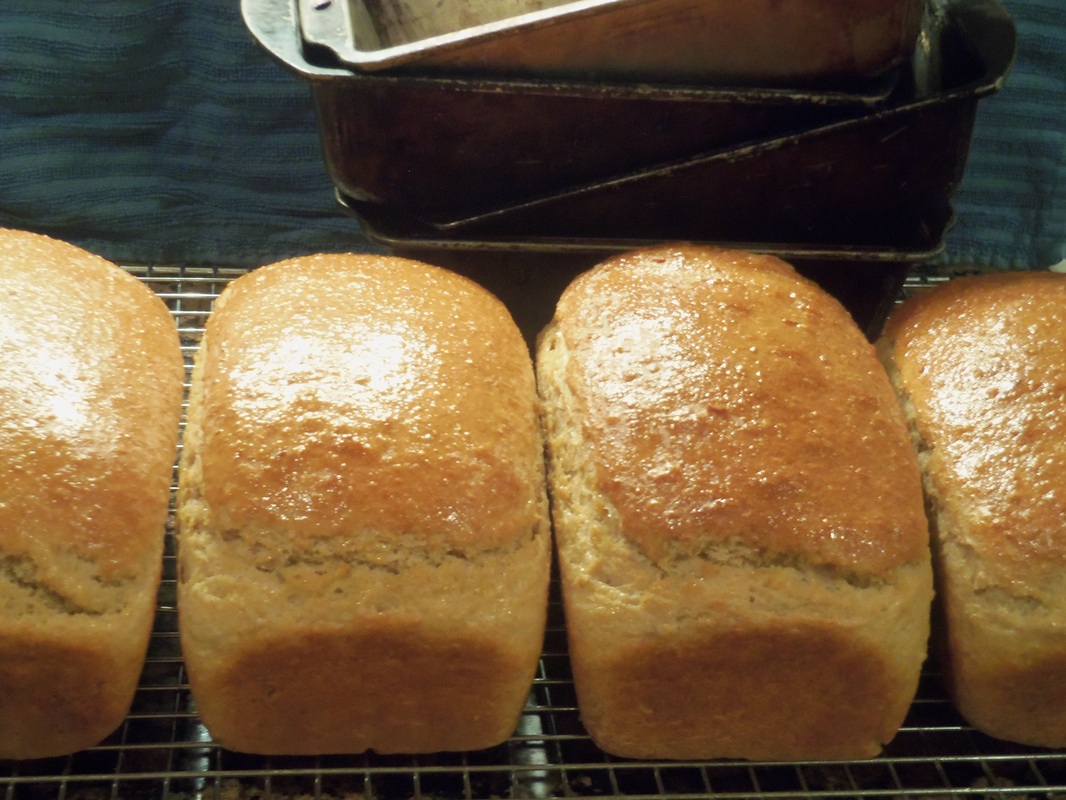If you use the 2 1/2 c of wheat kernels, the bread ends up about 60% whole wheat; if you use a high-speed blender (like BlendTec or Vitamix) , you can use 3 cups and end up with bread that is about 75% whole wheat.
Blender Wheat Bread
Soaker mash:
2 1/3 cups (17 oz) wheat kernels OR 3 cups (22oz), if using a high-speed blender
2 1/2 cups water
Combine in blender; mix on high speed for two minutes. If it seems too hard on your motor, add 2 Tbsp. water. Let the mash soak, covered and at room temperature, 8 hours or overnight. After soaking, add:
2- 2 ½ cups all-purpose flour (10-12 oz) OR use 1-1 ½ cups instead (5-7 oz) if you used 3 cups wheat in the puree
2 tsp. salt
2 Tbsp. oil
3 Tbsp. honey
1 ½ Tbsp. yeast (or 2 envelopes)
¼ c. hottest tap water (no more than 130°F)
Knead for five minutes, dough should be just thick enough to clean the bowl's sides. Add flour if needed, but the dough should be tacky and very soft. It’s had enough kneading when it passes the windowpane test. (See slide show.) Cover and let rest 20 minutes. Coat two 8x4 loaf pans with nonstick cooking spray.
Pour ½ cup water on the oven floor (avoid the heating elements!) or in a small metal pan on lowest rack. Turn the oven on 350°F for ONLY ONE MINUTE to warm it, then turn heat off.
Divide dough in half. With wet hands, shape each loaf and place in a pan. Place pans in the warmed oven. When the top of the loaf has risen about ½” above the edge of the pan (around 30-40 minutes later), remove from oven and preheat the oven to 400°F. When oven is hot and dough has risen to about ¾” above the rim, bake loaves for 20-25 minutes, until the sides are browned. Remove from pans; cool on a rack at least 20 minutes before slicing.
If using a high -speed blender, use 3 cups of wheat kernels in the mash. When adding flour the next day, use 1 1/2 cups flour instead of the 2 1/2 cups.
FAQ’s:
How long can a soaker sit? It’s best right around 8-12 hours, up to 24 hrs. If you need to have it go longer, refrigerate it from the beginning to slow down enzyme activity.
How high does the ideal proof go? (3/4”) Does the poke test work? Yes if you use a wet finger or let it rise uncovered.
How smooth can I get the puree in a blender, and does it matter much? It will be a little lumpy. It doesn’t need to be super smooth with this method; soaking eliminates any hard bits.
How long does it take to rise without a warm oven? Depends on your kitchen temperature, but around 1 hour.
Is the 20 minute autolyze necessary for flavor or texture? It’s OK without it, but rises better and tastes a little nicer (sweeter) with it.
How long does it really take to bake at 400°? This depends on whether your loaves are identical in size, where any hot spots are in your oven, and how accurate its thermometer is. My evenly-sized loaves took 21 min.




 RSS Feed
RSS Feed